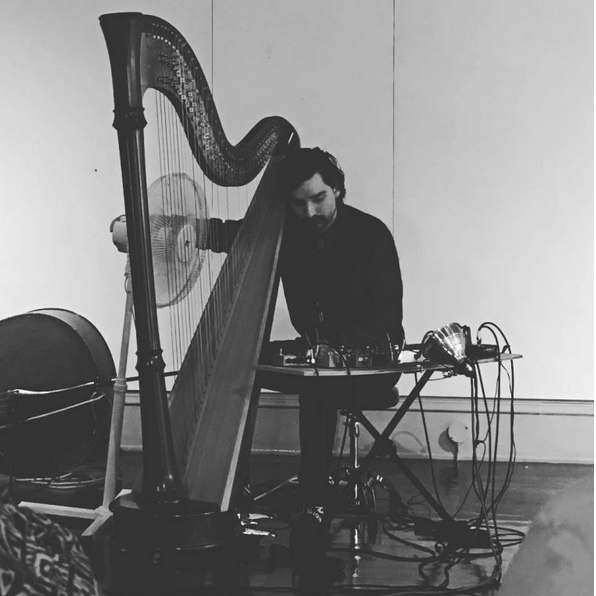This article is posted with the permission of No Exit

No Exit’s Laura King caught up with the improviser and experimental musician.
Laura King: The harp has ancient origins and is such a unique instrument. Can you give us a short overview of its early manifestation in Mesopotamia and its evolution?
Stephan Haluska: What a question about the harp that I don’t get asked very often. Let’s simply define a harp. We might say it’s a plucked instrument with strings stretched between a resonating body and supported by some kind of post. Using this definition, anthropologists generally regard harps as one of the most primitive instruments invented. Harps were independently invented all over the world, in ancient Egypt, sub Saharan, East Asia, and I believe the oldest were found in Mesopotamia. Those Mesopotamian harps evolved into the harps described in the Bible and spread to ancient Greece, which then further spread throughout the European continent.
In medieval Europe, there was a desire to play more complex music on the harp and various developments were added—first they added more strings and then added sharpening levers. Pedal harps, the kind of harp used in classical music and seen in orchestras were developed by various instrument builders throughout the 18th century and by the end of the century, Sebastian Erard refined the design into what we consider to be the modern pedal harp.
Click here to continue reading
Published on ClevelandClassical.com March 1, 2023.
Click here for a printable copy of this article


